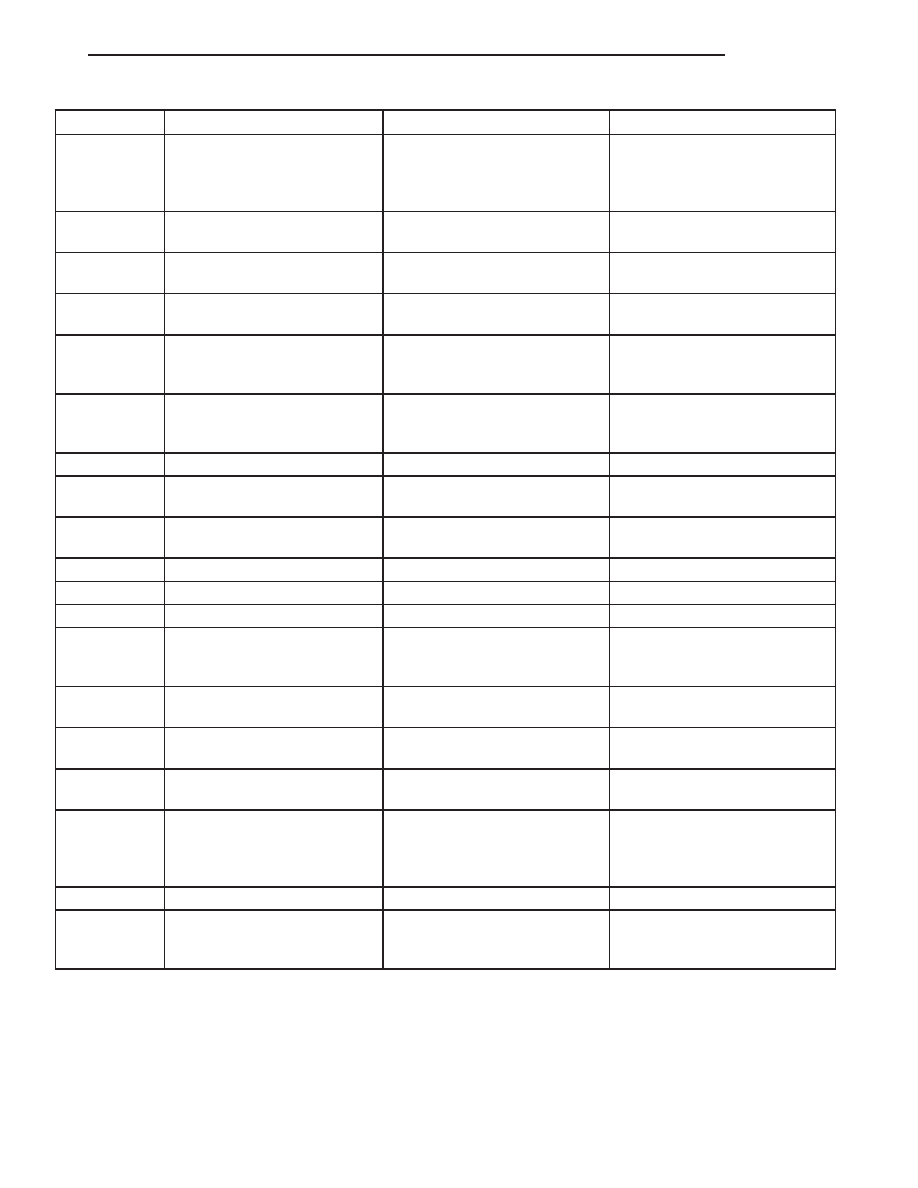Chrysler 300M, Dodge Interpid. Manual - part 344

CODE
FAMILY NAME
COMMON TRADE NAME
TYPICAL APPLICATION
UP
UNSATURATED
POLYESTER
(THERMOSETTING)
SMC, BMC, TMC, ZMC, IMC,
XSMC, UP
GRILLE OPENING PANEL,
LIFTGATES, FLARESIDE
FENDERS, FENDER
EXTENSIONS
EEBC
ETHER/ESTER BLOCKED
CO-POLYMER
EEBC
BUMPERS
EEBC/PBTP
EEBC/POLYBUTYLENE
TEREPTHALATE
EEBC, PBTP, BEXLOY
BUMPER, ROCKER PANELS
EMPP
ETHYLENE MODIFIED
POLYPROPYLENE
EMPP
BUMPER COVERS
EPDM
ETHYLENE/
PROPROPYLENE DIENE
MONOMER
EPDM, NORDEL, VISTALON
BUMPERS
EPM
ETHYLENE/
PROPROPYLENE CO-
POLYMER
EPM
FENDERS
MPU
FOAM POLYURETHANE
MPU
SPOILERS
PE
POLYETHYLENE
ALATHON, DYLAN,
LUPOLEN, MARLEX
-
PP
POLYPROPYLENE
(BLENDS)
NORYL, AZDEL, MARLOX,
DYLON, PRAVEX
INNER FENDER, SPOILERS,
KICK PANELS
PP/EPDM
PP/EPDM ALLOY
PP/EPDM
SPOILERS, GRILLES
PUR
POLYURETHANE
COLONELS, PUR, PU
FASCIAS, BUMPERS
PUR/PC
PUR/PC ALLOY
TEXIN
BUMPERS
PVC
POLYVINYL CHLORIDE
APEX, GEON, VINYLITE
BODY MOLDINGS, WIRE
INSULATION, STEERING
WHEELS
RIM
REACTION INJECTED
MOLDED POLYURETHANE
RIM, BAYFLEX
FRONT FASCIAS, MODULAR
WINDOWS
RRIM
REINFORCED REACTION
INJECTED MOLDED
PUR, RRIM
FASCIAS, BODY PANELS,
BODY TRIMS
TPE
THERMO POLYETHYLENE
TPE, HYTREL, BEXLOY-V
FASCIAS, BUMPERS,
CLADDINGS
TPO
THERMOPOLYOLEFIN
POLYTROPE, RENFLEX,
SANTOPRENE, VISAFLEX,
ETA, APEX, TPO, SHIELDS,
CLADDINGS
BUMPERS, END CAPS,
TELCAR, RUBBER, STRIPS,
SIGHT, INTERIOR B POST
TPP
THERMO-POLYPROPYLENE
TPP
BUMPERS
TPU
THERMOPOLYURETHANE,
POLYESTER
TPU, HYTREL, TEXIN,
ESTANE
BUMPERS, BODY SIDE,
MOLDINGS, FENDERS,
FASCIAS
LH
BODY
23 - 5
BODY (Continued)